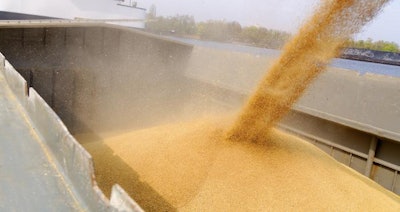
Prices for corn, soybeans continue upward climb, but record production could reverse the trend
Prices for corn and soybeans continued to rise throughout July on the back of global recovery from the novel coronavirus (COVID-19) pandemic, but both commodities should be cheaper come fall thanks to predictions of record global production, according to the U.S. Department of Agriculture (USDA).
Soybean prices rose in July across all major exporters, with U.S. export bids up US$14 per ton for soybeans, and soybean meal up US$6 per ton. Bids for meal from Brazil and Argentina also increased US$5-7 per ton, though prices began to fall off during the latter part of the month.
Prices for corn from Argentina and the Black Sea region also ran US$1 per ton higher in July than in June, while Brazilian bids remained steady at US$166 per ton. In a reversal of the soybean trend, prices for U.S. corn have already begun to fall, down US$9 to US$162 per ton. According to the USDA, July marked the first time U.S. bids crossed below Brazil since this spring.
The USDA reports that U.S. corn prices have begun to drop ahead of what is anticipated to be another record year for corn production, with productivity expected to exceed 181 bushels per acre this season. U.S. farmers are forecast to produce 15.3 billion bushels of corn, bringing average on-farm prices to US$3.10 per bushel for 2020-21, down from last year’s US$3.60 per bushel, as supply continues to exceed demand.
Demand for corn has nonetheless increased, thanks to accelerating imports by China. According to the USDA, China has purchased corn at a rapid pace through the first half of the year to satisfy a growing need for animal feed, with Chinese feed mills struggling to find competitive gains among rising domestic prices. If it continues to purchase corn at this rate, China stands to reach its tariff-rate quota of 7.2 million tons for the first time since 2001.
Globally, corn sales sit at the highest rate in five years.
Soybeans have followed a similar trend, with supply expected to outstrip demand thanks in part to the record-breaking harvest that is expected. China has so far committed to purchase 2 million tons more than last year. However, global sales of soybeans remain 11% lower than the 2018-19 season, according to the USDA, bringing the expected average price for 2020-21 down to US$8.35.











